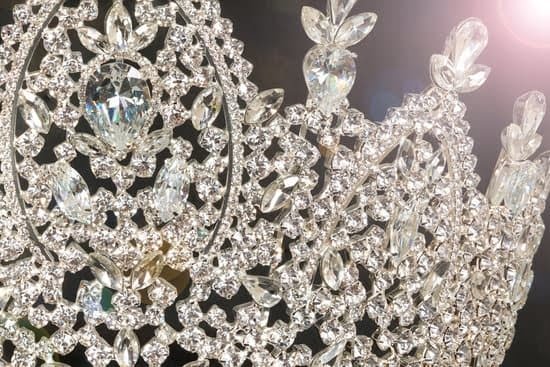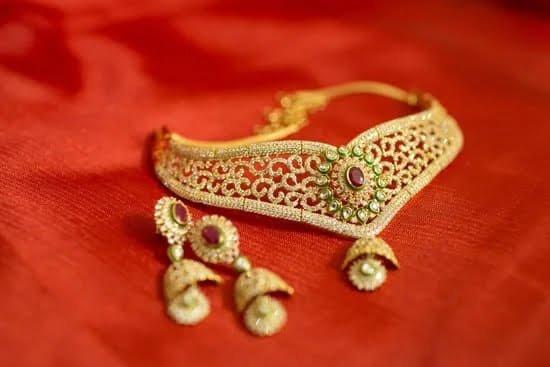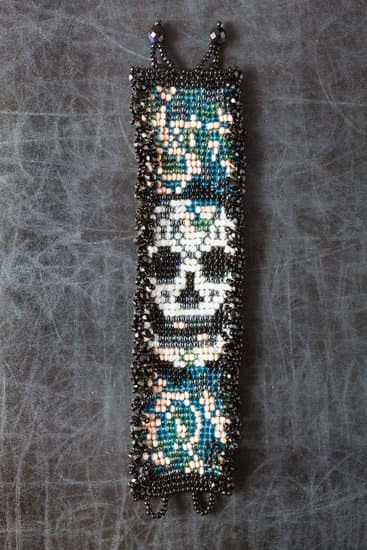Introduction
The idea of opening a jewelry shop may be exciting, but you should take several things into consideration before you do so. Start by deciding the type of jewelry shop that you want to open. Do you want to specialize in certain types of jewelry, such as fine jewelry or fashion and costume jewelry? Are there particular age groups that your target market caters to? Would you like to also offer other items such as watches or accessories? Furthermore, consider the cost of starting and running the business with regard to things such as inventory and staff. Choose a location for your business strategically; it’s important that is easily accessible for customers. Finally, source good quality products from reliable suppliers.
It is essential to have a comprehensive business plan when opening a jewelry shop. Your plan should include all the costs associated with launching and running the store along with marketing tactics, suppliers and potential customers. It is also important to obtain proper licensing and insurance before opening your shop so that you are compliant with local laws and regulations, including workplace safety standards if employing staff. Additionally, decide how you will display your products keeping in mind design elements such as lighting and signage. Try to create an inviting environment that makes potential shoppers feel comfortable browsing through the store’s items. Once open, develop pricing strategies according to what other businesses are charging for their products while still taking into account overhead costs such as rent or wages for staff members. Make sure all merchandising practices remain within recommended guidelines so make sure your prices don’t exceed those set by recognized outlets in the same area. Lastly, promote your business through various channels such as social media platforms or brochures placed in public places including beauty salons or coffee shops . This will help drive traffic towards your establishment once it opens its doors!
Developing a Vision and Identifying Your Unique Selling Points
Before you open a jewelry shop, it is important to develop a clear vision of what your store will be like and how you want to present yourself to the public. Think carefully about what makes your business stand out from other similar stores in your area. Are there particular design styles that you specialize in? Do you use more exotic materials? What kind of customer service do you anticipate offering? Answering these questions will help define your unique selling points, which in turn can help guide the overall design and feel of your store. Additionally, consider if there are any additional services or products that consumers would expect from a store such as yours, such as repair services or gifted packaging. Taking the time to think through this early in the process will help ensure success once your business starts operating.
Conducting Market Research About Your Target Demographic
Conducting market research before opening up a jewelry shop is a critical step. It will help inform your decisions on where to locate, the type of jewelry you stock, and how best to market your store. Start by identifying your target demographic by analyzing the local population: what age groups, genders, and incomes are located in close proximity? Once you have identified your target audience, research their shopping habits: preferences for types of jewelry, most often visited stores, etc. It is also important to understand current trends in the industry so that you can tailor your shop accordingly. Keep in mind when researching that people come for the experience of shopping for jewelry as much as the types of items stocked; look at other successful shops and try to determine what draws customers in. Finally, use data available online such as reviews (e.g. Yelp) or social media presence (e.g., Instagram) to get an understanding of what competitors offer and ensure that you are offering something unique and attractive to new customers.
Formulating a Thorough Business Plan
A solid business plan is a key component when it comes to opening a jewelry shop. This document should include an executive summary of your business – including its purpose and goals, along with analysis of the market competition and customer base. In addition, your plan should develop strategies for marketing and promotion, layout the store’s financials (including start-up costs and expected profits), as well as any additional actions for success. You should also consider researching potential partners or investors who will help fund the shop’s establishment. In some cases, you may also need to secure licenses before continuing with the launch. Finally, choose an appropriate legal structure for your business based on geographical location and tax regulations.
Once you’ve written up a thorough business plan, it’s time to actually set up your jewelry shop itself. You’ll need to find a good retail space that meets the needs of your store – this can relate not just to size but also layout and local demographics within the area of establishment. Consider what type of security system you will install in the shop in order to protect both staff and customers, as well as insurance policies covering theft or breakage of jewellery items in case something goes wrong. From there arrange interior design elements such as lighting, shelving displays etc., depending on the brand aesthetics that you’re aiming to communicate; this part is incredibly important when it comes to attracting potential customers once you open for business! Additionally, purchase necessary items such as point-of-sale systems (card readers etc.), metal safe storage units for high-value pieces, furniture and POS material tailored towards persuading new customers – all allowing them to easily decide which piece they would like buy from you.
Understanding Different Financing Options Available
When opening a jewelry shop, it is important to consider the different financing options available. Depending on the capital you have available, one must decide what type of financing is best suited for their business. There are generally three main types of financing that can be used.
The first type of financing option that can be considered is debt financing. With debt financing, an entrepreneur can borrow money from banks, venture capitalists or private lenders and must make repayments over an agreed-upon period of time. When taking out a loan for a jewelry shop, the lender will usually require some type of collateral such as assets of the business or personal guarantees from owner(s). It’s important to note that this type of financing usually requires making payments along with interest as well as any other loan fees or costs associated with it.
A second finance option available is equity or venture capital funding. This entails taking on investors who are willing to help fund your business in exchange for partial ownership and/or board control privileges. This is helpful if you do not have enough cash flow to cover all expenses related to opening a jewelry shop up front. However, it’s important to note that giving up ownership rights could mean giving up control as well and in some cases, profit sharing agreements may be required.
The final possible funding route is bootstrapping which means self-financing using personal funds and funds sourced within the business (via revenue earned). Bootstrapping eliminates any form of debt and allows entrepreneurs more freedom because they don’t have anyone relying on them for repayment. The inconvenience with this strategy however is that operations may become limited due to lack of adequate money set aside for all expenses needed such as inventory purchases and marketing costs .
Overall understanding different financing options available when opening a jewelry shop will dramatically strengthen your chances of success due to risk diversification options given and having sufficient resources allocated based on individual needs .
Researching Ideal Locations for Your Jewelry Shop
When researching ideal locations for your jewelry shop, it is important to keep in mind both cost and potential customer base. For instance, if you plan to open a jewelry shop in an area with relatively low foot traffic, you may need to make sure that rent is low so that you can generate enough profits despite limited access to customers. On the other hand, if you are planning to open your shop in a high-traffic area, consider the cost of the rent in comparison with the increased number of customers you will be able to attract. An up and coming neighborhood or mall may also provide plenty of visibility with reasonable rent costs as well. Making sure that any prospective location has adequate parking or public transportation nearby is another key factor when selecting where to open your shop. Evaluating local competition is also important; understanding what type of customers they cater to and what prices they offer will help ensure that you remain competitive when opening your jewelry shop.
Establishing an Impressive Online Presence
Creating an impressive online presence is critical to the success of any small business, including a jewelry shop. An effective website should feature high-quality visuals, including pictures of your products and store displays. It should also include a detailed description of the services or products offered as well as bios of your staff and/or artisans. Consider creating links to websites related to the jewelry industry that can be helpful to customers. You may also want to have a blog where you post updates on new styles and tips on selecting the right pieces for their needs or occasions.
In addition, having a strong social media presence is imperative for marketing your jewelry shop online. Create pages for each social media platform: Facebook, Twitter, Instagram, YouTube and Pinterest are just some examples that could help you reach more potential customers and build relationships with existing ones. Make sure to feature imagery from your website on these accounts as well as providing engaging content such as advice articles or how-to tutorials. Using hashtags is also a great way to increase brand visibility and track conversations about topics related to jewelry. Having promotions such as giveaways or discounts on certain items can also go a long way in gaining followers in addition to reaching out directly to influencers in the industry who specialize in promoting businesses within their niche.
Crafting an Initial Inventory of Jewels
When you’re starting a jewelry shop, the first step is to create an initial inventory of your jewels. It helps to have quality items that set your jewelry apart from others. Think about what pieces you’d like to create and/or offer in your shop — this could include necklaces, rings, bracelets, earrings, charms, etc. To build a comprehensive inventory, plan to stock a variety of metals and gemstones at different price points. If possible, try to source and use materials that are ethically sourced in order to increase sustainability throughout the industry. Additionally consider whether you’ll be offering custom jewelry services such as repairs or designs from greeting cards to alleviate financial constraints on customers who don’t want to purchase costly yet meaningful gifts for their loved ones. Finally as part of establishing an initial inventory review relevant trends in both fashion and fine jewellery to ensure that you start off with items that have both aesthetic and commercial appeal. Make sure to source from jewelry suppliers who can provide solutions quickly so you don’t miss out on the latest ideas in this growing marketspace!
Setting Prices that Balance Fair Value and Profitability
When setting prices for the jewelry in your shop, it is essential to consider both fair value of the item and profitability. It is important to research the current market prices of the pieces you are selling so that you can set a fair price for customers. However, it is also important to keep in mind your own expenses and desired profits. Many shop owners utilize markup rules when pricing their pieces. This means setting a price that is based on both an item’s cost, plus a certain percentage for profit. For example, if an item costs $45, then with a 50% markup rule this would be equal to a retail price of $67.50, leaving you with a margin of $22.50 per unit sold. Additionally, shop owners often create bundle deals or offer discounts on certain items in order to raise sales while still reaching their desired margins of profit – such as offering 15% off two items or free gift wrapping with purchase of any two items over $20. Be sure to find numbers that are comfortable for you and your business moving forward into operation!
Planning Strategies for Employing Staff and Acquiring Vendors
It is important to plan carefully in terms of employment when opening a jewelry shop. Before hiring staff think carefully about their job descriptions and qualifications, as many customers are discerning when it comes to jewelry. Have an idea of how the shop should be managed and what kind of atmosphere you want your staff to provide for customers. When selecting potential employees, make sure they possess any applicable skills such as diamond or gem grading certification or knowledge related to appraising jewelry. Additionally, it might be wise to consider the cost-efficiency of employing part-time workers if appeals to you over full-time employees.
When it comes to acquiring vendors, research well in advance who the best suppliers may be for a successful jewelry business. Which vendors have the best prices, highest quality items and most reliable delivery options? Networking with jewelers both in person and online can offer valuable insights into which suppliers might work best with your particular shop setup. Gathering several different contacts is key before settling upon a supplier; while they may appear professional on the surface their customer service ratings could be below satisfactory after further research has been conducted.
Developing a Promotional Strategy
It is important to develop a promotional strategy for your jewelry shop that will help you attract customers and draw them back. This may include creative advertising and marketing campaigns through traditional means such as print media, radio and television advertisements, as well as online promotions. Additionally, creating relationships with influencers in the fashion and jewelry communities could help to spread word-of-mouth about your brand which may attract new customers. You could also attend events or create product collaborations with other brands in order to increase your exposure. Finally, launching an effective digital marketing strategy such as search engine optimization (SEO) could be beneficial in driving more people to your website and ultimately lead to more sales of your products. Utilizing a combination of these tactics can help create a successful promotion plan for launching and maintaining your business’s success.
Conclusion
Opening a jewelry shop is a great opportunity for budding entrepreneurs to realize their dreams of owning and operating their own business. With the right planning and knowledge, you can create an amazing store that carries unique and beautiful jewelry pieces to attract a loyal customer base. Before opening your shop, it’s important to research the market, find out what kind of jewelry sells best in your area, and determine how much you should charge for each item. In addition, you should consider hiring knowledgeable staff members to ensure excellent customer service, designing eye-catching displays to draw attention to your merchandise, developing well-defined marketing strategies aimed at growing your business, and investing in top-notch security measures to protect your inventory. Taking these measures will enable you to succeed in running a successful jewelry shop. So if you have what it takes to manage this type of business venture, don’t hesitate; seize the opportunity now!

Welcome to my jewelry blog! My name is Sarah and I am the owner of this blog.
I love making jewelry and sharing my creations with others.
So whether you’re someone who loves wearing jewelry yourself or simply enjoys learning about it, be sure to check out my blog for insightful posts on everything related to this exciting topic!





